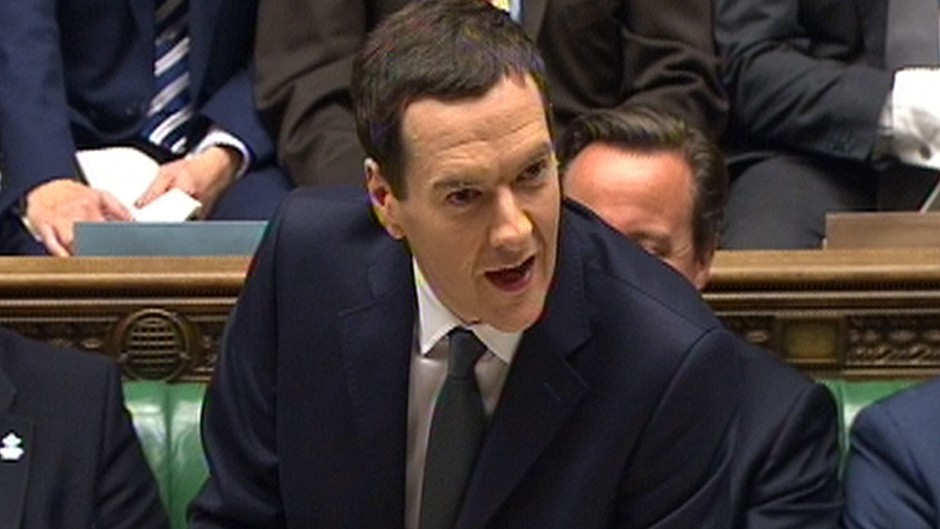George Osborne drew election battle-lines yesterday as he unveiled a mini-budget packed with measures designed to appeal to target voters.
Home-buyers, holiday-makers, low-paid workers and North Sea firms were among the winners in the chancellor’s fifth and final Autumn Statement before the polls open in May.
On the losing side, Mr Osborne launched a fresh crackdown on banks and tax-avoiding firms such as Google, in a move aimed at disproving Labour claims that the Tories only care about the rich.
The Autumn Statement had been described as the last, big event of this coalition government – but Liberal Democrat leader Nick Clegg did not even show up yesterday, as he continued to distance himself from the Conservatives.
The chancellor faced a tricky task as he stood up in the Commons to deliver the speech, knowing he would face criticism when the Office for Budget Responsibility confirmed he had missed his primary economic targets by a significant distance.
In 2010, Mr Osborne had promised that the coalition would wipe out the deficit by the end of the parliament, but yesterday he told MPs that it had only been cut in half.
The chancellor was also forced to admit he would miss his annual borrowing target by £5billion, but pledged that the public finances would be back “into the black” by 2018/19.
Labour’s shadow chancellor Ed Balls seized on the official figures, scoring his rival’s report card as – “every target missed, every test failed, every promise broken”.
Mr Osborne said the economy was in “crisis” when he took charge of the finances, but “through the storm we have stayed the course, and now Britain is on course for surplus”.
The chancellor grabbed the immediate headlines with a surprise move to overhaul stamp duty in England, Wales and North Ireland, making it cheaper to buy homes worth less than almost £1million.
Scottish Finance Secretary John Swinney claimed that the changes copied his own plans, which come into effect for Scotland in April, but concerns have been raised about the differences in the two systems.
Meanwhile, measures such as new investment in the NHS in England will mean that Mr Swinney will be handed an extra £213million to spend under the Barnett formula.
A new row over devolution was also brewing last night after Mr Osborne confirmed plans to devolve corporation tax to Northern Ireland, in a move which would help it compete with the Republic of Ireland, but also fuel fresh SNP demands for Scotland to have power over the levy.
Meanwhile, life-saving search and rescue services, and air ambulance charities, will be among a number of groups to become newly eligible for VAT refunds.
On personal taxation, Mr Osborne confirmed that people will be able to pass on their tax-free ISA allowances to spouses when they die, said he was bringing in a £90,000 charge for people who are non-domiciled in the UK for tax purposes but have lived there for 17 of the past 20 years, and rubber-stamped plans for the higher rate income tax threshold to rise to £42,385 next year.
Scottish Chamber of Commerce chief executive Liz Cameron said: “It is disappointing that the chancellor did not take the opportunity to freeze Business Rates for the next two years, and we would urge the Scottish Government to go further while it has the opportunity.”
